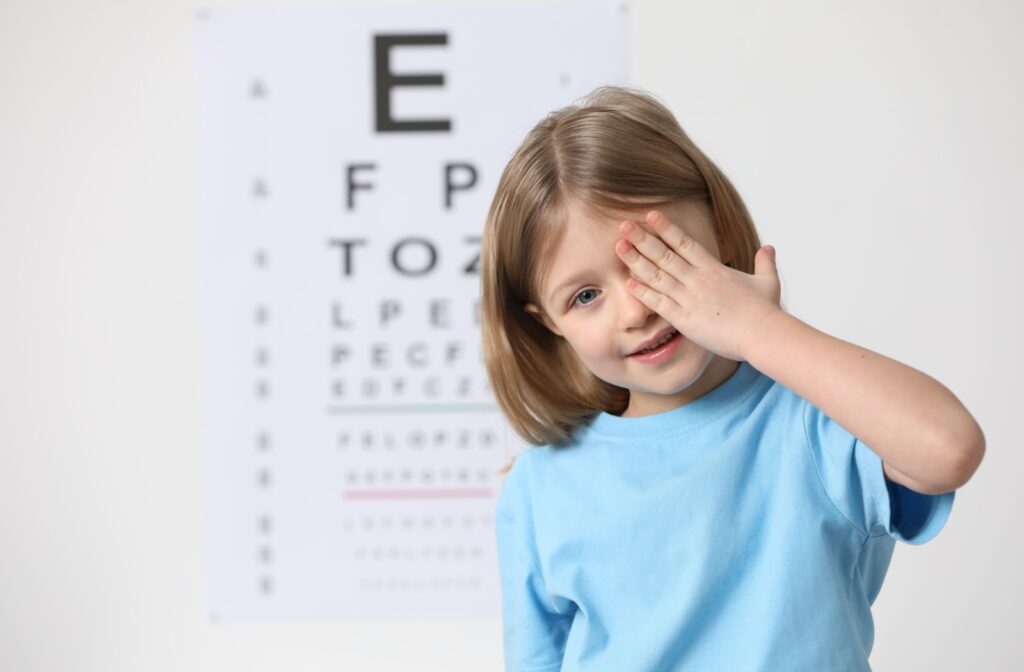Most people don’t think twice about their vision until it starts to change. Blurry vision, squinting to read signs, or headaches from eye strain can all indicate refractive errors, the most common being astigmatism and myopia.
Astigmatism and myopia are both common vision conditions, but they affect your eyes in different ways. Astigmatism is caused by an irregular shape in the cornea or lens, while myopia occurs when the eyeball is too long or the corneal curve is too steep, making distant objects appear blurry.
Understanding the difference between them can help you recognize changes in your vision.
What Is Astigmatism?
Astigmatism occurs when the front surface of the eye (the cornea) or the lens inside the eye has an uneven shape. Instead of being round like a baseball, the eye is shaped more like a football. The irregular shape causes light to focus on more than one point on the retina, leading to blurry or distorted vision at all distances. Some common signs of astigmatism include:
- Blurry vision
- Eye strain or discomfort
- Difficulty seeing clearly at night
- Headaches
Astigmatism is usually present from birth and can occur in conjunction with other refractive errors, such as myopia (nearsightedness) or hyperopia (farsightedness).
What Is Myopia?
Myopia, or nearsightedness, is a condition where objects up close appear clear, but things farther away look blurry. This happens when the eyeball is too long or the cornea is too curved, causing light to focus in front of the retina instead of directly on it.
Myopia typically begins in childhood and often progresses through the school years. It has become increasingly common among children and teens, with lifestyle and environmental factors, such as reduced time outdoors, playing a role.
Some signs of myopia can include:
- Squinting to see distant objects
- Sitting close to the TV or holding devices too close
- Complaints of headaches or eye fatigue
- Difficulty seeing the board at school
Astigmatism vs. Myopia

While astigmatism and myopia are both refractive errors that affect how light focuses on the retina, they do so in different ways:
- Myopia: Your eyeball is too long or your cornea is too steep
- Astigmatism: Your eye is irregularly shaped
Someone can have just one of these conditions, or both at the same time. For example, you might be nearsighted and also have astigmatism that affects your vision clarity.
What Is Hyperopia?
Hyperopia, or farsightedness, is another common refractive error. In this case, the eyeball is too short or the cornea is too flat, causing light to focus behind the retina instead of directly on it; the opposite of myopia.
While people with myopia struggle to see far away, people with hyperopia may find it difficult to see up close. This can lead to symptoms like eye strain, headaches, or blurred vision when reading or using a computer. Like myopia, hyperopia can also be present with astigmatism.
How to Manage Your Eye Conditions
Managing Myopia Progression
Myopia can worsen over time, especially when it begins early in life. The earlier it’s diagnosed and managed, the better the chances of slowing its progression.
Several options are available to help reduce the progression of myopia:
- Orthokeratology (Ortho-K): These specially designed rigid contact lenses are worn overnight to gently reshape the cornea. They provide clear vision during the day without glasses or contacts and have been shown to slow myopia progression in children.
- Soft Contact Lenses for Myopia Control:
- MiSight® 1 day: Daily disposable contact lenses for myopia control, designed specifically for children to slow progression while correcting vision.
- Abiliti™ 1-Day: Another daily soft lens option, incorporating advanced optical designs to help manage myopia in children.
- MiyoSmart Glasses: These innovative spectacle lenses use defocus technology to help manage myopia while providing clear vision. They’re worn just like regular glasses and have been clinically proven to slow eye growth in children.
- Atropine Eye Drops: Low-dose atropine, used at bedtime, may help slow eye growth associated with myopia.
- Lifestyle changes: Encourage kids to play outside and take regular breaks from close-up activities. A helpful tip is the 20-20-20 rule: every 20 minutes, look at something 20 feet away for 20 seconds.
Regular eye exams can help detect myopia early, allowing for tailored solutions to support long-term vision health.
Supporting Clearer Vision with Astigmatism
There are several ways to correct or manage astigmatism, depending on your lifestyle and vision needs:
- Prescription glasses: Glasses with cylindrical lenses are often the first choice for correcting astigmatism.
- Contact lenses: Toric contact lenses are specially shaped to match the irregular curve of the eye.
- Laser eye surgery: Procedures like LASIK can reshape the cornea to correct astigmatism, depending on your eligibility.
An optometrist can help determine a treatment option based on your vision goals.
See the Difference with Clearer Vision
Astigmatism and myopia are different vision issues, but both can affect your quality of life. Recognizing the symptoms and understanding your options can help you find a solution that works for you or your child.
If you notice any changes in your vision, it might be time to see an optometrist. Our friendly and experienced team at The Eye Studio by Kennedy Eye Clinic is here to help you see clearly and comfortably. Book your next eye exam today and get to know the difference clarity can make.



